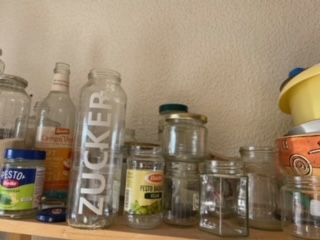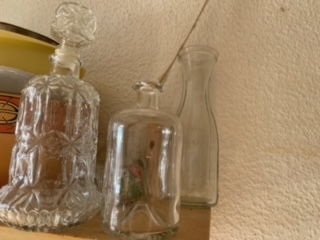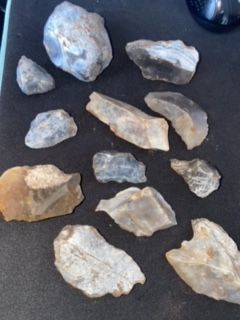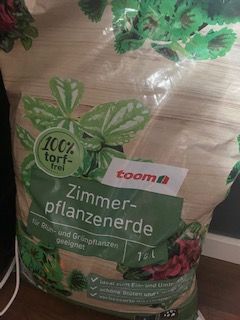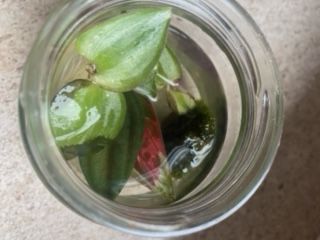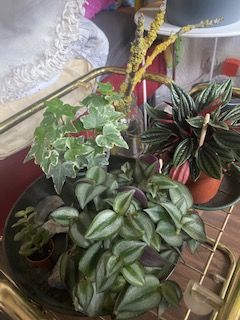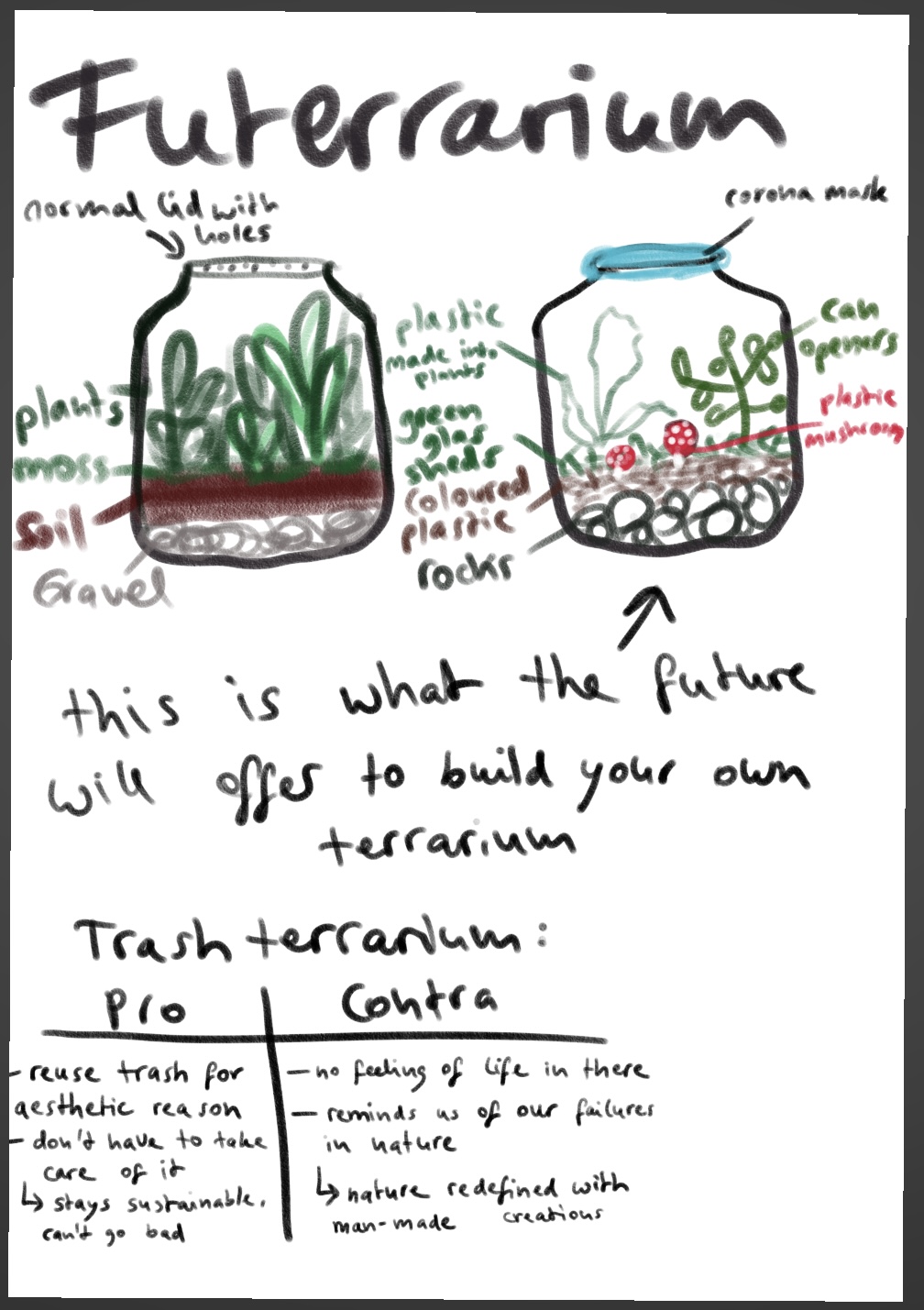Understanding of Sustainable Aesthetics
As a subjectivespoint of view, the words have two different meanings, which can collide into one understanding. Sustainability can be seen as taking eco-friendly ressources and giving it life and therefore great purposes. For example recycling/ upcycling. By using what is already there, we get to make materials or objects more long lasting, without creating new waste. The aesthetics is what makes the sustainable into some kind of art form. Giving it new life, new meanings and perspectives. Since aesthetic is subjective, the creator has freedom in its expressions and can chose how the art work is presented. Making it a sustainable aesthetic.
The process of making a sustainable and aesthetic project
1. General Ideas:
> turn nettels into ropes and try to make textile or baskets etc. out of it
> recycle trash into pots for plants + take kitchen scrapes/ herbs/ seeds for regrowing itself.
> turn natural ressources into colours/ paint. for example thumeric = yellow
> I could also combine these ideas into one big project: selfmade coloured basket = pot for the regrowing
plant.
> find a new usage for trash
> generating Bio gas by using compost
2. Chosen idea: use empty masen jars (my flatmates&me have a huge collection) give them a new life by turning them into terrariums
> How To: > first layer: gravel > second layer: soil > third layer: taller plants (place them et the back), smaller plants (placed at the front) > last step: place moss, nice looking stones and pieces of tree trunks > (extra step: place tiny insects that are good for the little eco-system: for example snails and spring tails)
- this project is a great way to keep the plant life sustainable, learn more about micro-organisms and place them in an aestheticly pleasing way
- Materials:
- Rule: Either collect or buy plants, without any harm! --> Collecting without harm results in finding plants that lay on the ground only --> moss that is ripped from its place of growth, takes years to regrow. If it is already decaptivated from its origin, its safe to take. Ask mother nature if it would hurt, if its taken away!
3. Further development of this project:
Through collecting plants, it was quickly noticed that there is a lot of trash laying around too. Simply picking up the trash, helps the environment all around. Some trash that has been collected could even be used as a Trash-Terrarium, giving trash a new purpose: sustainable aestheticly pleasing art
4. Grow plants in sterile glas environment
Experiments
Documentation of microbial fuel cell
References
- The Martian Garden, https://www.themartiangarden.com
- NASA https://www.nasa.gov/mission_pages/station/research/news/meals_ready_to_eat/
- Hito Steyerl - Ausstellung, https://www.museum-joanneum.at/kunsthaus-graz/ausstellungen/ausstellungen/events/event/10951/hito-steyerl
- In Kepler's Gardens, https://ars.electronica.art/keplersgardens/en/the-biosphere-project/
- Klaus Herbst, Pflanzfabrik, https://www.instagram.com/pflanzfabrik/?hl=en
- Living Alone for 2 Years in a Biosphere, https://www.youtube.com/watch?v=oaSRIR9AjFU
- How to build a terrarium, Beginners Guide: *https://www.youtube.com/watch?v=t2jL3QP4hTA&t=329s
- Plastic art: [1]
